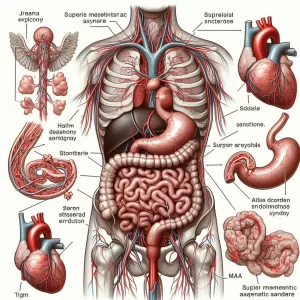What is Partial Colon Removal/Laparoscopic Partial Colectomy: Overview, Benefits, and Expected Results
The Fascinating World of Space Exploration
Space exploration is an exciting and challenging endeavor that has captured the imagination of people around the world. From the early days of rocketry to the present day, humans have been pushing the boundaries of what is possible in space.
In recent years, there has been a renewed interest in space exploration, thanks in part to the discovery of new planets and moons in our solar system. This has led to a number of new missions, both manned and unmanned, to explore these new worlds.
Space exploration is not without its risks, but it is a necessary endeavor if we want to learn more about our universe and our place in it. By pushing the boundaries of what is possible, we are opening up new possibilities for the future of humanity.
``` Edited: ```htmlJourney into the Enigmatic Realm of Space Exploration
In the vast expanse of the cosmos, where celestial wonders ignite our imagination, lies the captivating realm of space exploration. From the pioneering era of rocketry to the present day, humanity has embarked on an extraordinary quest to unravel the mysteries of the universe.
A surge of renewed fascination has propelled space exploration to new heights, fueled by the discovery of uncharted planets and moons within our solar system. This cosmic revelation has ignited a wave of missions, both manned and unmanned, venturing into these unexplored territories.
While the path of space exploration is not devoid of perils, it remains an essential endeavor in our pursuit of knowledge and understanding. By venturing beyond the confines of our planet, we unlock the potential for groundbreaking discoveries that may reshape our perception of the universe and our place within it. Each step forward expands the boundaries of human possibility, paving the way for a future brimming with infinite promise.
```التعريف والنظرة العامة
Partial colon removal, also known as partial colectomy, is a medical procedure that removes a part of the large intestine for the treatment of various conditions including Crohn’s disease and ulcerative colitis. Like most types of surgical procedures, it can now be performed through traditional open surgery or laparoscopically.
There are specific variants of the procedure depending on which part of the colon is removed. For example, low anterior colon resection is a partial colon removal procedure wherein the sigmoid colon and upper rectum are removed.
Colectomy should not be confused with a colostomy. The latter refers to a procedure wherein the damaged part of the colon is bypassed and a part of the colon is diverted to an artificial opening in the abdominal wall.
من يجب أن يخضع للنتائج المتوقعة
Laparoscopic partial colectomy is necessary for patients who suffer from the following conditions:
-
Crohn’s disease – A bowel disease characterised by the inflammation of the gastrointestinal tract’s lining. It causes several symptoms such as pain, severe diarrhoea, and fatigue, among others.
-
Ulcerative colitis – Another inflammatory bowel disease that causes rectal bleeding, frequent stools, severe diarrhoea and cramps, mucous discharge coming from the rectum leading to dehydration, and low abdominal pain.
-
Colon cancer – Colorectal cancer may come in many forms depending on which part of the colon is affected. These include cecum and ascending colon cancer, transverse colon cancer, descending colon cancer, and sigmoid colon cancer.
-
Sigmoid diverticulitis – Characterised by the perforation of the sigmoid diverticulum. التهاب الرتج can be caused by a disease or trauma. Traumatic cases, such as perforation due to a gunshot or stab wound, are considered as medical emergencies that require immediate surgical treatment.
-
Rectal cancer – This medical condition does not always require colon resection unless the cancer is located in the upper portion of the rectum. In such cases, the sigmoid colon is almost always affected or at risk. Thus, low anterior resection becomes necessary.
-
Bowel infarction – This condition occurs when the bowel becomes infarcted, putting the patient at risk of bowel perforation. Bowel infarction tends to develop due to ischemic colitis, which in turn develops due to compromised blood supply to the colon.
-
Colonic inertia – A form of constipation that sometimes requires colon surgery especially when medical interventions have failed to adequately treat the condition.
-
Polyposis syndromes – Polyposis syndromes such as familial adenomatous polyposis (FAP) and hereditary nonpolyposis colorectal cancer are other conditions treated with bowel resection. These conditions are characterised by the growth of premalignant colon polyps that eventually develop into cancer when left untreated.
The expected results of laparoscopic partial colectomy are:
-
Symptoms relief – For patients with inflammatory disease or cancer, the removal of the affected portion of the colon can relieve their symptoms.
-
Removal of malignant tumours as well as lymph and vascular structures to minimise the risk of cancer spread. Depending on the stage and extent of cancer, patients may need to undergo additional treatment such as radiation or chemotherapy to destroy all remaining cancer cells in their body.
-
Minimise the risk of cancer – For patients with polyposis syndromes or benign, non-cancerous growths in the colon, the procedure can keep these growths from developing into cancer. It can also prevent other complications, such as bleeding and bowel obstruction.
When compared to conventional open partial colon removal surgery, laparoscopic partial colectomy minimises the risk of postsurgical complications allowing patients to experience:
-
Reduced post-operative pain
-
Reduced bleeding
-
Reduced risk of infection
-
Shorter hospital stay
-
Reduced scarring
-
Faster recovery and return to normal activities
كيف يتم إجراء العملية؟
Laparoscopic partial colectomy is one of two ways through which a part of the colon is removed. While conventional open colectomy requires a long incision in the abdomen to gain access to the colon, the laparoscopic procedure is less invasive. Also known as minimally invasive colectomy, the surgeon makes small incisions where specialised surgical instruments are inserted. These instruments are used to perform the procedure inside the patient’s body while the surgeon controls them from the outside using a computer monitor as a guide.
One of these instruments is a cannula or port, a narrow tube that can pass through an incision less than half an inch in size. The surgeon then pumps carbon dioxide through the cannula to inflate the organs and create more space for the procedure to be performed.
The surgeon then inserts the laparoscope, a thin tube with a tiny video camera attached to one end, which provides a magnified view of the colon on an attached computer monitor.
For the procedure, the part of the colon that has to be removed is freed from the abdominal wall and other organs. The blood vessels attached to it are then sealed using a special energy device. The part of the colon that has been detached is then extracted through one of the cannula incisions.
المخاطر والمضاعفات المحتملة
Partial colon removal side effects can be either early or late complications.
Early complications are those that occur within the first 30 days after the procedure. These include:
-
Abscess
-
عدوى
-
Injury to nearby organs
Late complications, on the other hand, are those that occur after the 30-day recovery period. They often arise within the first six months following the procedure. These may include:
-
Small bowel obstruction
-
Urosepsis
-
Bacteremia
-
نزيف
-
Blood clot in the lungs or legs
Studies show that laparoscopic partial colectomy has a 0.9 percent 30-day mortality rate, which means that 1 in every 111 patients die due to complications.
مراجع:
-
Stein, David E. “Colon Resection.” 2015 Sep 14. Medscape. http://emedicine.medscape.com/article/1891505-overview#a2
-
“Laparoscopic colectomy.” The Ohio State University Wexner Medical Center, Center for Minimally Invasive Surgery. http://cmis.osu.edu/patient-care/colon/lapcolon/
-
“A comparison of laparoscopically assisted and open colectomy for colon cancer.” N Engl J Med 2004; 350:2050-9. http://www.nejm.org/doi/pdf/10.1056/NEJMoa032651
/ trp_language]
**Question: What is Partial Colon Removal or Laparoscopic Partial Colectomy?**
**Answer:** Partial Colon Removal, also known as Laparoscopic Partial Colectomy, is a surgical procedure performed to remove a diseased or damaged segment of the colon. Typically, it involves removing the affected portion of the colon while preserving the healthy sections. The procedure is commonly performed through a minimally invasive surgical approach, utilizing laparoscopic techniques.
**Question: When is Partial Colon Removal/Laparoscopic Partial Colectomy necessary?**
**Answer:** Partial Colon Removal/Laparoscopic Partial Colectomy may be necessary in cases of:
– Colon cancer: To remove cancerous growths within the colon.
– Diverticulitis: It helps address inflammation and complications caused by diverticula, small pouches projecting from the colon’s wall.
– Crohn’s disease or ulcerative colitis: To alleviate severe symptoms and manage complications.
– Polyps: When large or numerous polyps pose a high risk of developing into cancer.
**Question: What are the Benefits of Partial Colon Removal/Laparoscopic Partial Colectomy?**
**Answer:** Laparoscopic Partial Colectomy offers a range of benefits over traditional open surgery, including:
– Less invasive: It involves smaller incisions, resulting in minimal scarring.
– Reduced pain: Laparoscopic techniques minimize postoperative pain.
– Faster recovery: Patients generally experience a quicker recovery time.
– Shorter hospital stay: With minimally invasive surgery, patients can often return home within a few days.
– Reduced risk of complications: Infections and other complications may be lower with laparoscopy.
**Question: What are the Expected Results of Partial Colon Removal/Laparoscopic Partial Colectomy?**
**Answer:** Once the diseased or damaged colon segment is removed, the remaining healthy portions are reconnected. Depending on the specific situation, the surgeon may perform an immediate anastomosis (reconnection) or create a temporary ileostomy or colostomy to allow the colon to heal before rejoining it. The expected outcomes typically include:
– Alleviation of symptoms: Patients often experience relief from symptoms related to the affected colon segment.
– Cancer removal: In cases of colon cancer, the surgery aims to remove cancerous tissue and potentially prevent its spread.
– Management of complications: When addressing conditions, such as diverticulitis, colitis, or polyps, the surgery aims to control and minimize complications.
– Improved bowel function: After healing, patients may experience improved bowel movements and reduced discomfort.
It’s essential to discuss specific expected results and potential variations with the healthcare provider, as outcomes can vary depending on the individual’s condition and the extent of the surgery required.
تعليق واحد
اترك ردّاً
المقالات الشعبية








Sure, here is a single comment for the post title:
**Overview of partial colon removal, its benefits, and expected outcomes post-surgery.**